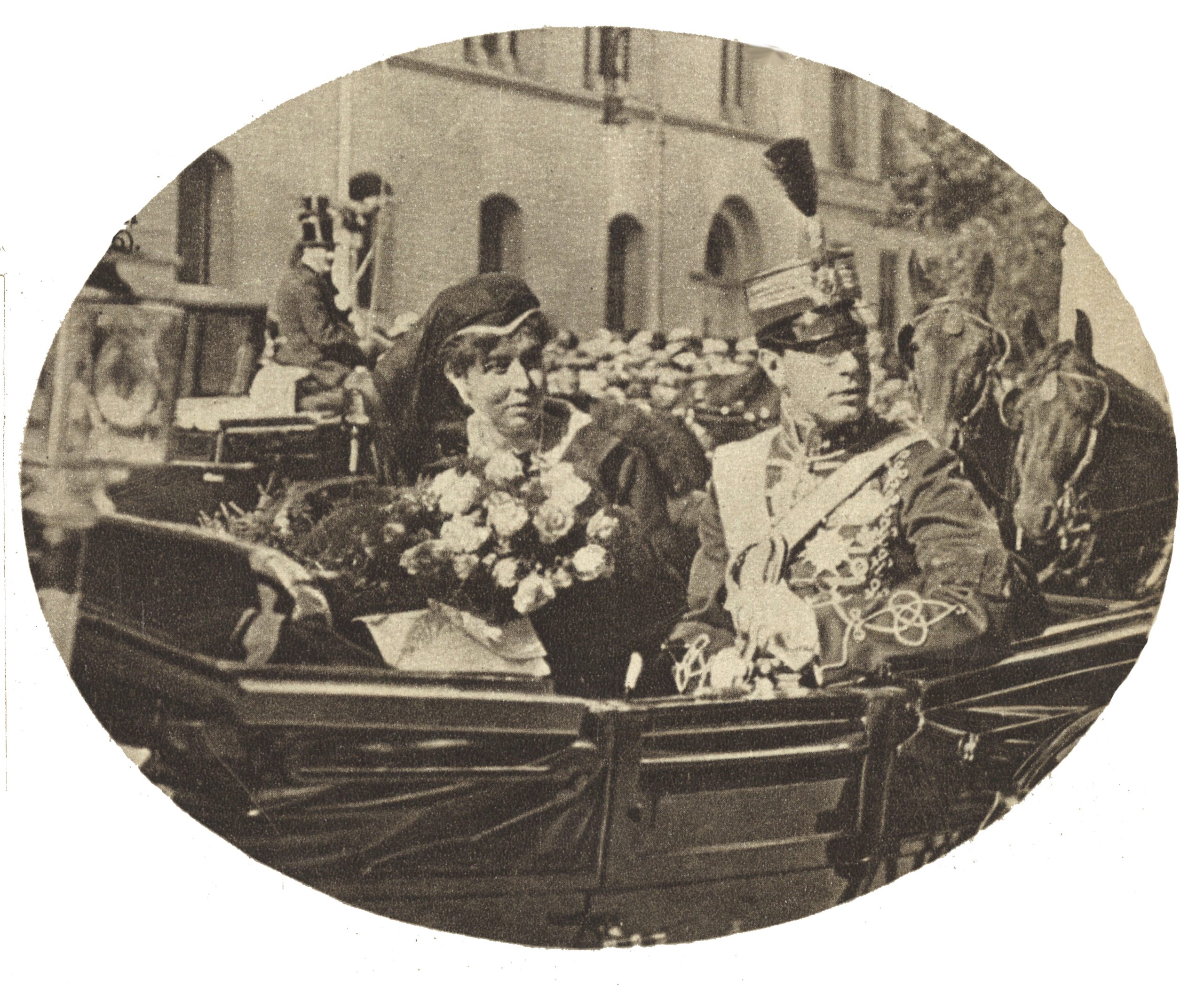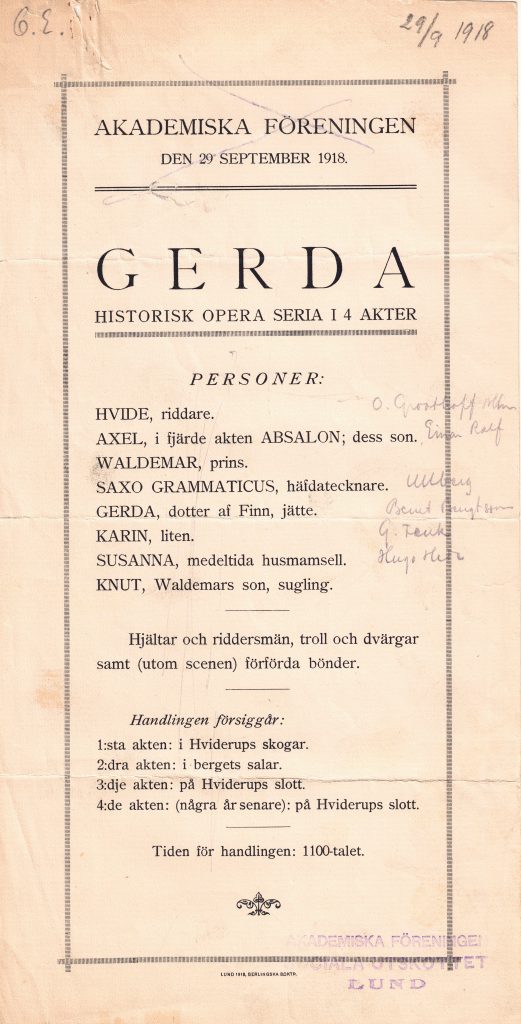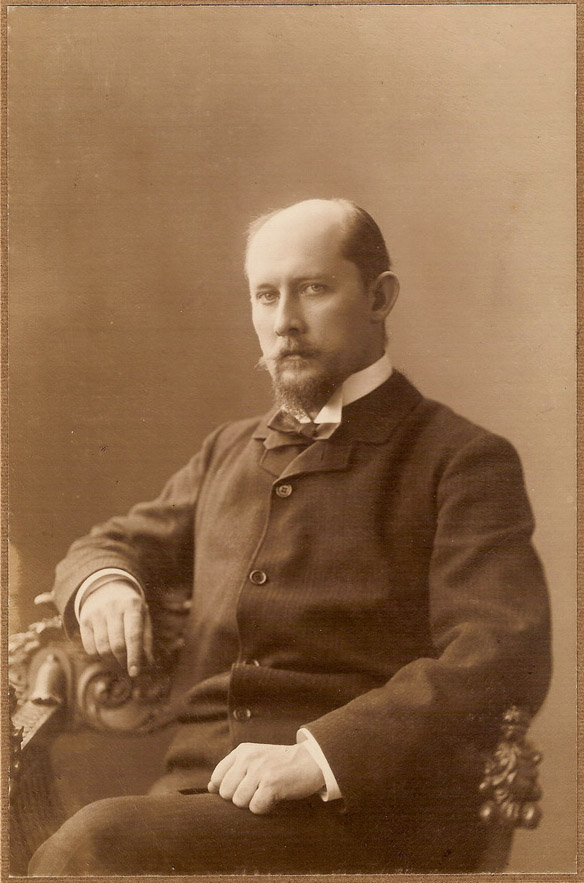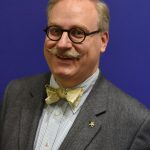When thinking about viruses in a university context, we perhaps mainly associate them with medical or scientific research. Or possibly, in a more everyday context, with how raging seasonal influenza strains and suchlike can lead to temporary increases in sick leave and leave to care for a sick child among university staff. However, certain viruses can affect a university more fundamentally, something that the Covid-19 pandemic of recent years – with staff working from home, the rapid transition to online teaching and cancelled doctoral conferment ceremonies – has taught us. But the coronavirus Sars-cov-2 was certainly not the first of its kind. Just over one hundred years ago one of its older relations, the influenza A(H1N1) virus, struck Lund University – and not least its students – hard.
From the history books we know the influenza A(H1N1) virus as Spanish flu. This is actually a misnomer, stemming from the fact that the first cases reported in the press were in Spain – where, among others, the King and members of the government were taken ill – in May 1918. However, by that time the virus had probably begun to spread in several other countries in continental Europe, but the ongoing press censorship during World War I had kept a lid on the news. The morale-sapping effect of a pandemic potentially threatening both troops and the civilian population was too much of a risk for it to be reported on openly. Spain on the other hand was neutral and still had a free press. The exact origin of the virus – which science only succeeded in identifying long afterwards – is still unclear however, but one theory is that it was taken to Europe by the American troops who began arriving after the USA entered the war. Once on these shores, it would prove to be a considerably more lethal weapon than all the human weapons with which the Central and Allied Powers had waged war against each other since 1914. And during the summer of 1918 it spread like wildfire, not just across war-torn Europe, but also to Africa. South America and Japan were also affected, but it is thought probable that the virus spread there from the USA.
A strange characteristic of Spanish flu was that – in contract to most other influenza strains – it did not primarily strike the traditionally “weak” groups such as young children, the elderly and the infirm. Rather, Spanish flu struck hardest against seemingly healthy young adults, mainly those aged between 20 and 40. The reason for this is still unknown, but one theory is that the virus caused the sufferer’s immune system to turn on itself. In other words, the stronger your immune system, the higher the risk of becoming seriously ill.
Professor Thunberg changes his mind
In Sweden, the first case of Spanish flu was noted in Skåne, namely in Hyllinge, in the summer of 1918. Ironically, this was not due to Skåne’s proximity to continental Europe. Hyllinge’s “patient zero” was a local man who had returned home at midsummer after a spell working in Norway, where he had contracted the disease (which in turn is thought to have come to Norway by ship from Scotland). Soon, some 50 local people had been taken ill. The district medical officer in Bjuv, Carl Dilot, was somewhat bemused by the rapid spread of infection, but even so made the assessment that it was just a matter of common influenza. There was consequently no cause to be overly concerned.
A similar assessment was also made initially by another medical expert, Torsten Thunberg, professor of physiology at Lund University. For several years he had been publishing a popular science journal called Hygienisk Revy, and its changing position on Spanish flu is indicative of how views on the virus would gradually alter. When Thunberg first wrote about the flu – one paragraph in the journal’s July edition – it was still under a slightly joshing headline “If the Spanish runny nose was life-threatening …”, and even though he noted that the infection “seems to be irresistible in its trajectory” he suspected that some of the reported cases were probably only “common mucous membrane catarrhs with a bout of fever”. But Thunberg did note that the “the Spanish runny nose does not seem to be a serious illness”, even though it could possibly “take a more serious turn” regarding “the elderly, infants and the infirm” so that “there could even be one or two deaths as a result”. However, even with “such an innocuous illness” Thunberg stated
[…] those who are ill have an obligation to keep away from healthy people. They should not without a valid reason be out in their neighbourhood and should not shake hands. They should preferably stay at home in isolation. And, above all, they should keep away from infants and the elderly.
This was in July and, as we saw above, Thunberg’s assumption about the primary at-risk groups was incorrect. The August edition of Hygienisk Revy did not mention Spanish flu at all. At the same time, the number of those taken ill nationwide was rising, particularly in Norrland and Skåne, and when the September issue of Hygienisk Revy came out, its first four pages were devoted to Spanish flu.

Thunberg now noted that they were dealing with a “a very infectious disease, spreading through airborne and direct contact”, in which one problem was that “many of those who are sick have such mild symptoms that they are not confined to bed”. Bedrest and self-isolation were what the professor primarily prescribed: “the person who is ill shall take to their bed and stay there until they are completely free from fever and any cough has gone”. He also realised that this was difficult achieve, as ordinary people’s impatience and the financial implications of being away from work presented obstacles. In addition, there was the fact that “life in modern society” in itself tended to mix “people with each other”:
The crowds of people in modern big cities and communication systems within and between communities, mean that such a disease that is now raging has the most favourable conditions for transmission to almost every home in our country.
One person who utilised this modern communication system during the summer was an alumnus of Lund University, Per Håkansson. He completed his doctoral degree in organic chemistry in Lund in 1873 and later became known as a manufacturer of vinegar and his own patented disinfectant, Salubrin. His company was based in Eslöv, but in early July 1918 he was compelled to travel to Stockholm on business, even though he felt somewhat unwell. Shortly after arriving, he felt considerably worse and died at his hotel after just a few days. The former Lund student Håkansson had thus not only become Sweden’s very first death caused by Spanish flu – he may very well have been the one who spread the disease to the capital.
Jubilee in the shadow of a food shortage and pandemic
Just over two months later, the traffic was going in the other direction. Now there was a large number of well-known people and dignitaries heading for Lund. The reason for this was that on 27 and 28 September, Lund University was to celebrate its 250th anniversary with great pomp. The original intention had been, as with previous jubilees, to schedule the celebrations at the end of the spring semester, but, as Vice-Chancellor Johan C. W. Thyrén stated in his review of the academic year 1918/19, “certain considerations, particularly the difficult conditions for supplying provisions” has meant the event had to be rescheduled for a later date. The conditions were a result of the war, which was now in its fifth year, bringing rising costs and shortages of most things – including the white velvet used in the student caps that was imported from England. The latter, however, was a minor concern for the students compared with the food shortage. Browsing through the Lund newspapers from 1918, the headlines about, and prior to, the jubilee are almost overshadowed by headlines about “the students’ food issue”. And, on top of this, Spanish flu now struck forcefully just weeks before the jubilee – and this against a student population already partially weakened because of the food shortage.
One of those afflicted was Thorild Dahlgren, a student of many years with multifarious involvements in student life (among other things, he was one of those who worked to resolve the above-mentioned “food issue”). In that autumn semester of 1918, he had got to the stage where he was ready to submit his doctoral thesis in mathematics Sur le théorème de condensation de Cauchy. The thesis defence was scheduled for 21 September, the very last date to be in time for the doctoral degree conferment ceremony during the jubilee celebrations the following week. With four days to go, Dahlgren fell ill with Spanish flu. When there was just one day to go and he was still ill, he was offered a further three-day deferral, something that he, however, declined. He later justified this in an article about his memories of student life:
I was sufficiently clear of mind to make the following argument: “either I am worse on Tuesday than I will be tomorrow, Saturday, and then I have completely missed the chance of achieving the objective, or I am better on Tuesday than I will be tomorrow, Saturday, in which case I might as well defend the thesis tomorrow”. [ – – – ] On Saturday, I got up immediately before the thesis defence, dressed myself in the compulsory tailcoat, got a cab for the short distance from Vinstrupsgatan 9, where I was living, to the University, performed a feeble defence of my thesis and after a three-hour break was back in bed.
Dahlgren was one of the lucky ones. Not only did he recover, but he did it in time to receive his laurel wreath at the Faculty of Philosophy’s jubilee doctoral degree conferment ceremony on 27 September. The Swedish royal family was not so lucky. King Gustaf V’s youngest son, Prince Erik, died of Spanish flu the day before Dahlgren’s thesis defence. Due to this, the royal couple cancelled their planned participation in the University’s jubilee. However, the event was not completely without royal lustre, as the King’s brother Eugen and the crown prince couple Gustaf Adolf and Margareta – the Duke and Duchess of Skåne – attended, although Margareta marked the recent death in the family by wearing mourning dress.

Despite the unfavourable circumstances, the festivities seem to have gone well and according to plan. The press referred to “an outstanding celebration”, “an impressive festive occasion” and “a resounding day of rejoicing in a celebratory atmosphere and sunshine” and thought that “those visiting the city have certainly taken only good memories home with them”. The question is how many of them – after two days of festivities, ceremonies, formal speeches and the general mingling of hundreds of local and visiting celebrators – took the virus home as well?
Certain parts of the jubilee programme had been under threat from the raging infection. For example, the students, through the Academic Society, were to contribute with a special production of the student cabaret Gerda – written in 1886 and subsequently considered to be one of the major classics in the spex genre – but were then suddenly faced with a drastically decimated ensemble. The Society’s then archivist Tusse Sjögren wrote:
[…] suddenly Prince Axel, the White Knight, the conductor, the prompter and a couple of small roles were replaced with others. But it worked. Einar Ralf, who was called in to sing in Father Berg’s jubilee cantata, took over Axel’s velvet cap and the always willing Otto Groothoff at LD [Lunds Dagblad] was surprised on the morning of the performance, taken to the Society and played the White Knight excellently after only one day of song and script rehearsals.

Some explanation of the above may be in order. Einar Ralf was at that time a student at the Royal Conservatory of Music in Stockholm and conductor of the Stockholm Academic Male Chorus but had studied law and been involved in student life in Lund in the early 1910s. He became known subsequently as a concert singer, choirmaster and choral teacher. “Father Berg” refers to Alfred Berg, the University’s then director of music, who became an honorary doctor at the jubilee in 1918. Finally, Otto Groothoff was a journalist, theatre critic and playwright. After hastily filling in, he seemed to have acquired a taste for performing in student cabaret, as he could be seen in the role of the Pharoah in Uarda in 1919 and 1923.
Despite everything, the student cabaret went ahead. As a finale to the jubilee celebrations, the students also planned to organise two balls, an official event at the Academic Society and a more unofficial one at the Grand Hotel. The city’s Healthcare Committee appealed at the last moment for these to be cancelled. However, the plea went unheard, at least regarding the official ball at the Academic Society, which was attended by 500 guests. They had promised that the dancing itself would be “restricted to a minimum”, but there is perhaps reason to question the extent this was adhered to. In any case, the city decided to put its foot down more emphatically only a few days later rather than just make a request. In a situation where the press was reporting around 50,000 people infected and one thousand deaths nationwide, the Healthcare Committee in Lund decided to ban theatre performances, concerts, dance events (including dance schools) and “other similar entertainment conducive to creating crowds” from 30 September until further notice. A similar ban on showing films at cinemas had been previously introduced. When asked by the press whether the jubilee festivities had contributed to the spread of infection, Lund’s chief medical officer, Rydberg, diplomatically replied that “it’s too early as yet – and altogether difficult – to make a statement about this”.
Handwashing and toothbrushing – but no cancelled lectures
Despite the local measures in Lund and other places, October was the worst month yet. The epidemic reached its peak with almost 10,000 deaths in Sweden in one month. In these circumstances, the Healthcare Committee in Lund made a plea on a matter in which they clearly did not consider they had the remit to issue a ban. The Committee wondered “if it wasn’t the case due to the epidemic that lectures and exercises at the University should be restricted to the greatest possible extent”? The matter was discussed at the University’s then next-highest governing body, the Lower Consistorium, on 15 October. To get an idea of the epidemic’s spread, the Lower Consistorium had before the meeting requested information from the student nations on the current number of sick students. The highest number was reported by Lund Nation (18) followed by Kristianstad (6) and Småland (5). The figures were considerably lower at the other student nations in terms of both numbers and percentages, and at some there were no current cases of illness at all to report. It can be mentioned as an interesting detail that Malmö Nation stated it could not provide any reliable figures at all “as a large number of the nation’s members live at their homes in Malmö and, if they fall ill, they are cared for there”. Malmö Nation was at that time virtually the only student nation whose members were not mainly living at their place of study but commuted to lectures. On the other hand, Malmö was the student nation that reported most deaths, five, among its members “from complications of influenza”. Otherwise, only Gothenburg Nation reported a single death.
In the following discussion, a range of views were expressed by those present. Astronomer Charlier deemed that “a difference must, of course, be made between lectures where there is a large audience and those where only a few students have registered”. Anatomist Broman’s view was that “numerous lecture halls are far too small and cramped for the number of students who were now attending lectures” and recommended that in these cases “a request should be made to those students who do not need to take part in courses and exercises now, to defer these until the epidemic in question was over in the city”. Lawyer Björling stated that it should “be sufficient if the University authorities ensured that lecture halls were disinfected after the end of each day’s lectures”.
Ultimately, the Lower Consistorium, despite the Healthcare Committee’s plea, decided not to cancel any teaching sessions, but to follow Björling’s proposal about disinfection plus “lecturers with large audiences would be assigned the large lecture halls (I and VI), and possibly the auditorium”. Lastly, information notices were to be put up with the following wording, of which at least the first two points feel very familiar from a modern Covid-19 perspective:
Due to Spanish flu, students are advised to
1) stay at home in cases of feeling unwell, a cold or fever, and not to go to lectures, courses or exercises due to the risk of exacerbation and the spread of infection;
2) wash hands often and always before meals and when returning home after being outdoors;
3) brush teeth carefully and use mouthwash before and after every meal and in the evenings.
The notice was signed by John Forssman, at that time deputy vice-chancellor and professor of general pathology, bacteriology and public healthcare. Contemporary events suggest Forssman was perhaps responsible for the third point, concerning mouth hygiene. A few weeks earlier the press had reported a discovery made by Forssman in his parallel capacity as a physician at Lund Hospital.

At the department for sexually transmitted diseases, patients were on two wards. On one of them almost all the patients had contracted Spanish flu, while on the other there was only one. The difference between the patients on the two wards was that the one with least infections was for patients suffering from syphilis, who had therefore “to avoid complications from the mouth” been prescribed “to […] use mouthwash and carefully brush teeth after every meal and in the evenings with a 1% solution of hydrogen peroxide”. Forssman therefore found that “in all probability, it is this care of the mouth and teeth that has given the syphilis patients protection against the infection, which can hardly be thought to penetrate in any other way than via the mouth or nose”. Whether Forssman’s conclusion stands up in terms of more recent research findings is beyond the author of this article’s capacity to judge, but perhaps a reader with medical expertise can answer this?
The student death toll
Regardless of toothbrushing, disinfected lecture halls and handwashing, Spanish flu claimed more lives in Lund’s academic world, and not least among the students. At that time, deaths among the teaching staff and students as well as others with University connections were reported regularly in both the university directories published each semester and the University’s academic year reports. A look at the University directory for the autumn semester of 1918 (which obviously came out quite a while after the semester started) reveals that the list of deaths since the previous issue began with elderly people – honorary members of student nations and similar – during the late autumn, but from the beginning of September, the names of ordinary young students begin to appear. By the time the directory was printed in mid-October, no less than ten such names had been added to the list, i.e. a somewhat higher figure than that reported at the Lower Consistorium’s meeting around the same time. And there would be more. In the academic year report for 1918/19, the total number of student deaths during the entire academic year had risen to 20, of whom 15 had died during the autumn semester. Admittedly, the exact cause of death is not stated, but Spanish flu can be ascertained as the main culprit from a comparison with the number of deaths in the academic year immediately before and after: five in 1917/18 and four in 1919/20. The number of deaths among students was thus at least four times as many during the worst year of the pandemic. And as the number of students in the last years of the war was around 1,300 to 1,400, 20 deaths represent a mortality rate of around 1.5%.

The figure for deaths among Lund students was of course small compared with the number of dead nationally and internationally. The Swedish central bureau of statistics, Statistiska centralbyrån (SCB), reported 28,922 proven deaths due to Spanish flu in the years 1918 och 1919, but also added a further 6,000 “probable” cases. Based on the Medical Board’s figures, which show a total of 516,013 confirmed cases of infection, this means that almost 7% of those infected died. Calculated according to Sweden’s population at the time, this represents a mortality rate of around 0.6%. Even with the proviso that we do not know the exact cause of death for all of the 20 deceased Lund students in 1918/19, there is much to suggest that the percentage of deaths within this group was considerably higher than the national average – an assertion that is reasonable considering that the infection struck the young harder than the population as a whole.
Globally, the figures were almost inconceivably high, especially as research in more recent times has revised the previous calculations – of just over 21 million deaths between 1918 and 1920 – to between as many as 50 and 100 million worldwide. So from this perspective, perhaps 20 deaths among Lund students can be seen as a small part of a global tragedy.

Fredrik Tersmeden
Archivist at the University Archive

Selected sources
Thorild Dahlgren: “Anteckningar från studentår 1907–1918” in Gerhard Bendz (ed): Under Lundagårds kronor – Tredje samlingen (Lund 1955).
“En intressant iakttagelse om sjukans spridning” in Svenska Dagbladet 26 September 1918.
Nils-Olof Franzén: Undan stormen – Sverige under första världskriget (Stockholm 1986)
Lunds Dagblad, various issues September 1918
Lunds Kungl. universitets katalog, höstterminen 1918 (Lund 1918)
Lund University Archive: Kansliets arkiv 1666–1930/31, volume A 2 B:47 (Minutes of the Upper and Lower Consistorium 1918).
Per T Ohlsson: 1918 – Året då Sverige blev Sverige (Stockholm 2017).
Ture Sjögren: 10-tals student (Academic Society Yearbook 1993; Lund 1994).
Wikipedia (Swedish version), the articles “Spanska sjukan” and “Spanska sjukan i Sverige”.
Fredrik Tersmeden: “Post festum jubilæum – Något om eftermälen och konkreta lämningar från Lunds universitets tidigare jubileer” in Årshögtiden. Lund University 26 January 2018 (Lund 1918)
Torsten Thunberg: “Om spanska snuvan vore livsfarlig…” and “I ’Spanska sjukans’ tecken” as well as “Skolorna och spanska sjukan” in Hygienisk Revy no 7 and no 9 1918 respectively.
Johan C W Thyrén: Lunds universitets årsberättelse 1918–1919 (Lund 1919)
Torbjörn Wester: “När mannen från Oslo tog sin tids pandemi till Skåne” in Sydsvenska Dagbladet 26 April 2020.

